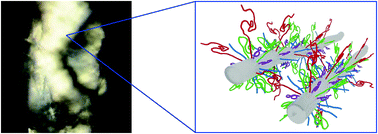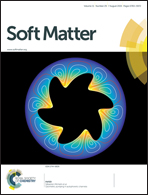Composite bottlebrush mechanics: α-internexin fine-tunes neurofilament network properties†
Abstract
Neuronal cytoplasmic intermediate filaments are principal structural and mechanical elements of the axon. Their expression during embryonic development follows a differential pattern, while their unregulated expression is correlated to neurodegenerative diseases. The largest neurofilament proteins of medium (NF-M) and high molecular weight (NF-H) were shown to modulate the axonal architecture and inter-filament spacing. However, the individual roles of the remaining α-internexin (α-Inx) and neurofilament of low molecular weight (NF-L) proteins in composite filaments remained elusive. In contrast to previous predictions, we show that when co-assembled with NF-M, the shortest and the least charged α-Inx protein increases inter-filament spacing. These findings suggest a novel structural explanation for the expression pattern of neurofilament proteins during embryonic development. We explain our results by an analysis of ionic cross-links between the disordered polyampholytic C-terminal tails and suggest that a collapsed conformation of the α-Inx tail domain interferes with tail cross-linking near the filament backbone.


 Please wait while we load your content...
Please wait while we load your content...